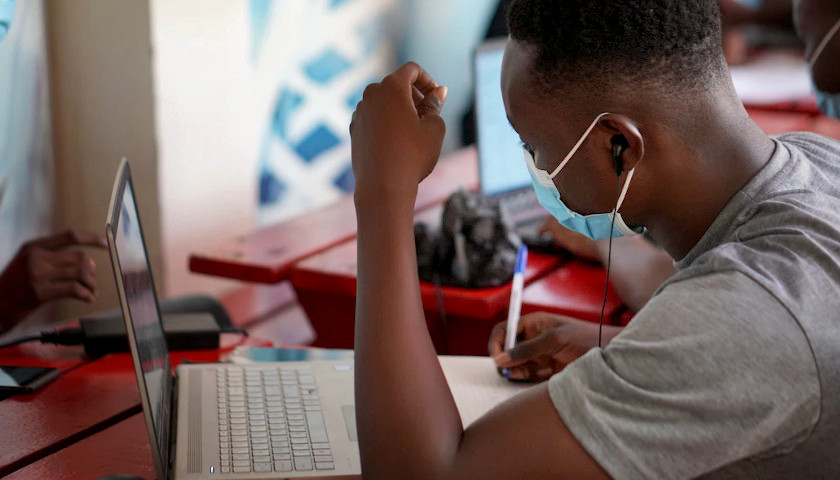by Brett Rowland
A new national report highlights the “compounding effect” the pandemic and remote learning have had on student performance, especially for the youngest learners.
The report from Renaissance Learning Inc., a Minnesota-based education technology company, found students have made modest gains since returning to the classroom, but have yet to catch up all the way.
“All signs suggest that this is going to be a multiyear recovery,” said Gene Kerns, vice president and chief academic officer at Renaissance. “We can reset instruction back to where it was pre-pandemic, but that isn’t going to instantly move students up to where they would have been had the pandemic not occurred.”
Most schools across the U.S. shut down during the early months of the pandemic and resorted to remote learning. For many, remote learning continued into the fall and 2020 and winter of 2021.
The report, which studied test results from 4.4 million kindergarten to 12th grade students in reading and 2.9 million in math, found students remain behind.
“Overall, students are performing lower in 2021–2022 compared to 2020–2021, suggesting that the pandemic continues to have a compounding effect on student achievement,” the authors wrote in the report.
The report found evidence of growth.
“When looking at the change in scores between school years, winter-to-winter score differences were smaller than fall-to-fall differences, indicating that winter 2021–2022 student performance is less behind than it was in the fall, but has not reached the level of the prior school year,” the authors wrote in the report.
Progress was weaker for students who struggled with reading and for those who started school for the first time during the pandemic, Kerns said.
“This is the age of the foundational skills, the things that in some ways we use for the rest of our lives,” he said. “We automate a lot of things a little later on, but this is the foundation and in the same way when you are building a house – you want the right people, the right materials – you want everything right because you know weight is going to be put on top of it. That’s what’s happening in these early grades and that’s why we have to be particularly concerned about them.”
For many of the youngest students, the pandemic marked their introduction to formal learning in America.
“You have a whole lot of kids showing up for kindergarten and first grade, where they may be walking into a formal setting for the first time in their lives,” Kerns said. “Had we not had a pandemic, they might have spent a year or two years in day care. This is a population of kids that were just now beginning to see the effects – there’s been a tremendous amount of churn in terms of what has been going on with them prior to starting school.”
From early 2020 when the COVID-19 pandemic took hold in the U.S., education across the country has been repeatedly disrupted by closures, remote learning and other challenges.
“We’ve had multiple seasons where everybody has been doing the best they can, but the net result is still being a little bit less than normal, that’s the compounding effect, it puts you in a very different situation than you would have been otherwise.”
Among other things, the report recommends students spend more time in the classroom to help make up ground.
“We should take advantage of all options for academic time including extended day, tutoring, and summer learning, all of which are approved areas of use for Elementary and Secondary School Emergency Relief (ESSER) funds,” the report concludes.
“The last thing we can afford is a summer off,” Kerns said.
– – –
Brett Rowland has worked as a reporter in newsrooms in Illinois and Wisconsin. He most recently served as news editor of the Northwest Herald in Crystal Lake, Illinois. He previously held the same position at the Daily Chronicle in DeKalb.





